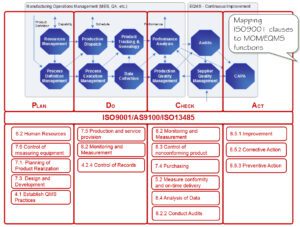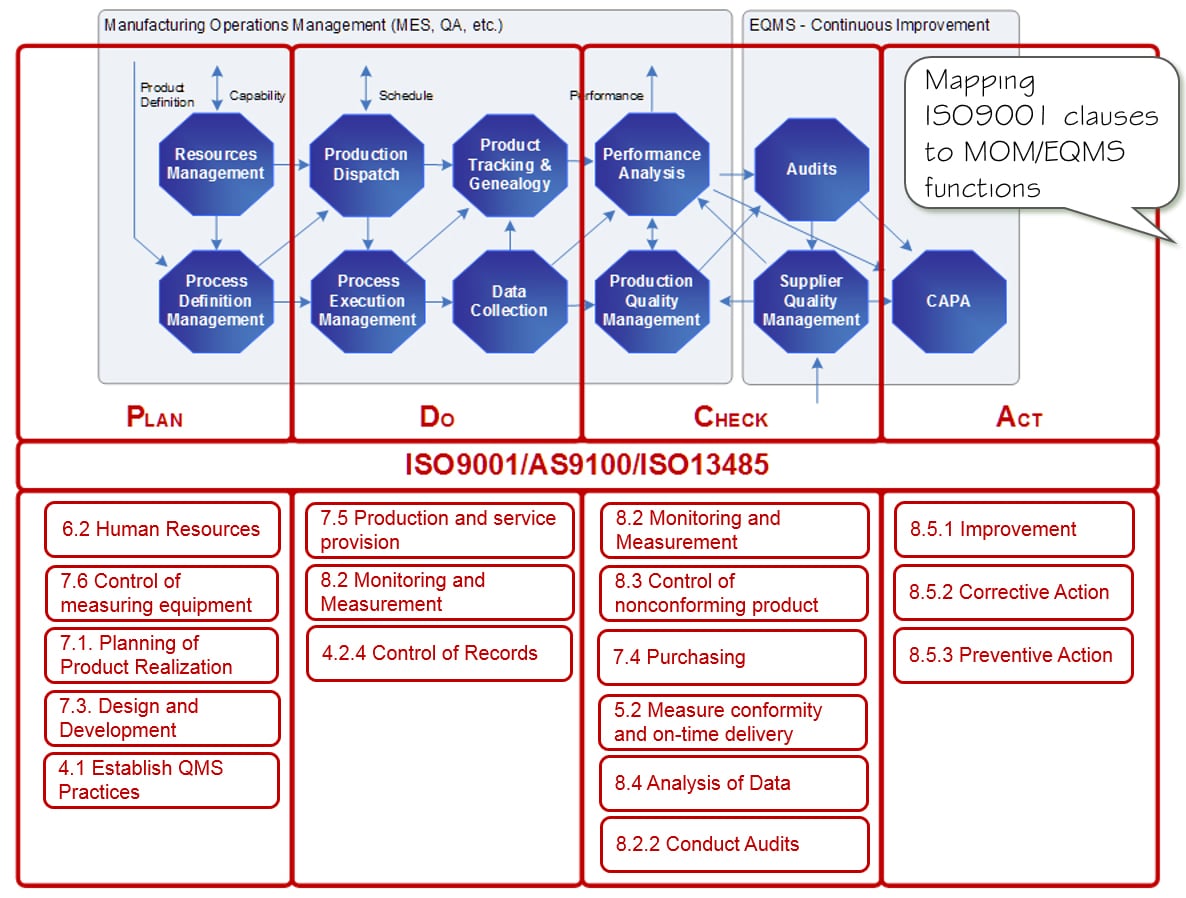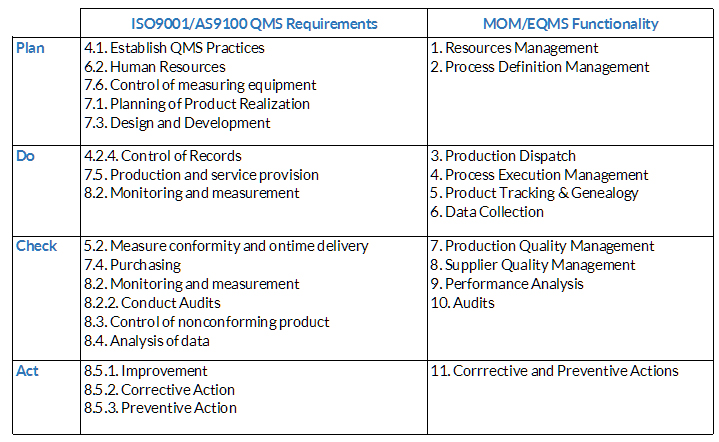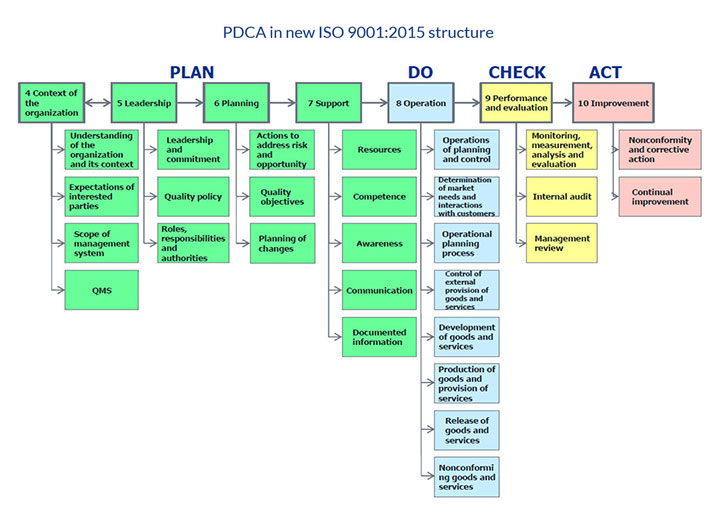 How do we frame a discussion that overlaps processes and standards that have evolved separately over decades in different functional departments? That was the challenge in preparing for the webcast “The Intersection of Manufacturing Execution and Quality Management Systems” [1] this last November.
How do we frame a discussion that overlaps processes and standards that have evolved separately over decades in different functional departments? That was the challenge in preparing for the webcast “The Intersection of Manufacturing Execution and Quality Management Systems” [1] this last November.
Before we dive into the discussion of the overlapping models, we should discuss why you should care about this seemingly esoteric subject. The premise is that your business could run more efficiently using common tools for both manufacturing and quality management with integrated processes and communications. When we view both manufacturing and quality management as part of a bigger corporate strategy to improve communications, visibility, compliance, and customer satisfaction, the need to improve integration becomes more obvious.
Standards for Quality Management Systems (QMS), including ISO9001, AS9100 and ISO13485, have been evolving over the last three decades in parallel to standards and models for manufacturing systems including ISA95’s Manufacturing Operations Management (MOM) model and MESA’s Manufacturing Execution System (MES) models. MOM evolution has focused on better scheduling, production, automation, and efficiency, while QMS evolution has focused on repeatability, traceability, documentation, auditability, and corrective action. However, both MOM and QMS are “systems” with a similar end goal—a quality product in the hands of the customer. There should be no surprise that there are overlapping requirements between the two system definitions.
While reviewing the standards and reference materials, the process management pattern of the PDCA (Plan-Do-Check-Act) cycle emerged as a common denominator between the different standards and a method of organizing the discussion.
- Plan – Define goals, plans, and processes to carry out the task including who, what, where and when.
- Do – Carry out the plan. Keep progress and data records.
- Check – Complete data analysis. Perform Audits. Document problems. Summarize to performance metrics.
- Act – Select areas for improvement. Implement and track top priority improvement projects.
The following table summarizes the cross-reference between the PDCA cycle, the clauses of the IS09001/AS9100 standard, and the functionality found in either MOM or EQMS (Enterprise Quality Management System) software to support the requirements.
Looking forward to ISO9001:2015 there will be even more alignment to the PDCA cycle in the structure of the new QMS standard.
For a more detailed presentation of QMS requirements and the common software functions that the organization can leverage across manufacturing and quality management practices, check out the full presentation at the link provided below for the recorded webcast “The Intersection of Quality Management and Manufacturing Execution Systems” [1] and MESA’s “Quality and Regulatory Compliance – Strategic Initiative Guidebook”. [2]


